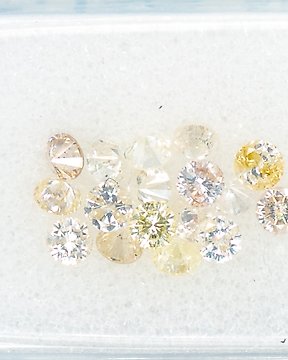
17 pcs Diamanter - 0.99 ct - Rund - NO RESERVE PRICE - E to Light Yellow - I1, I2, SI1, SI2, I3
Nr. 85356319

Nr. 85356319

Very impressive and large George III sterling silver coffee biggin with a matching lampstand and burner. Rare historical artifact as the set is hallmarked for a female silversmith, of which there were only a handful - please see below for full details.
Coffee biggins, invented by George Biggin, were originally designed to 'drip brew' coffee rather than merely boiling coffee and water in a saucepan and decanting straight into a cup.
Engraved armorial family crest to the front shows that this coffeepot was commissioned by an aristocratic family. The crest depicts a bird holding a tree branch.
The coffee pot has a round baluster body resting on a stepped spreading foot and a domed hinged lid with a reeded knop finial. The spout has an attractive fluted shape and a covered design to prevent spillage. The top of the pot is trimmed with a gadrooned border; the same gadrooned design decorates the stand which has a tri-foot shape.
Highly ornate decoration to the stand legs in the form of lion paw feet with applied acanthi leaves just above and elegant flowerheads at the top. The feet are cast with wonderful attention to detail with well-defined claws and sinewy toes.
Each part of the set is hallmarked including the pot body, the interior of the lid, the base of the handle and the stand.
Maker: Rebecca Emes & Edward Barnard I
Assay office: London
Date: 1815
1042 g
31.5 cm tall assembled
coffeepot - 21.5 cm tall, 18 cm spout to handle, 12 cm across at widest point
stand - 10.5 cm tall, 12 cm overall diameter, 13 cm across feet
Rebecca Emes (died 1830) was an English silversmith, known for her household silverware. Little is known of her life. She married the engraver and watercolour painter John Emes. In 1796, John Emes became partner in the London silversmith company of Thomas Chawner and his son Henry Chawner. The firm specialised in silver tea and coffee services. When the elder Chawner retired, Emes became sole owner and presumably carried on his own work of creating engravings for publications, while Rebecca started to work in the silversmith business. John Emes died in 1808 and Rebecca became a partner with Edward Barnard, the foreman, and Henry Chawner. The firm, which operated under the name Rebecca Emes & Edward Barnard, grew considerably during their tenure. Emes withdrew from the business in 1829.
Very good antique condition. Several tiny dings all over the body that are too small to show up in photos; shallow indent on the lid where it makes contact with the handle; the gadrooned border of the stand is very slightly uneven; the burner has been soldered to the stand, but there is some gaping along the joint line; the lower part of the handle is very slightly pushed in; part of the seam of the body is visible near the handle.
Sådan køber du hos Catawiki
1. Opdag noget særligt
2. Afgiv det højeste bud
3. Foretag en sikker betaling